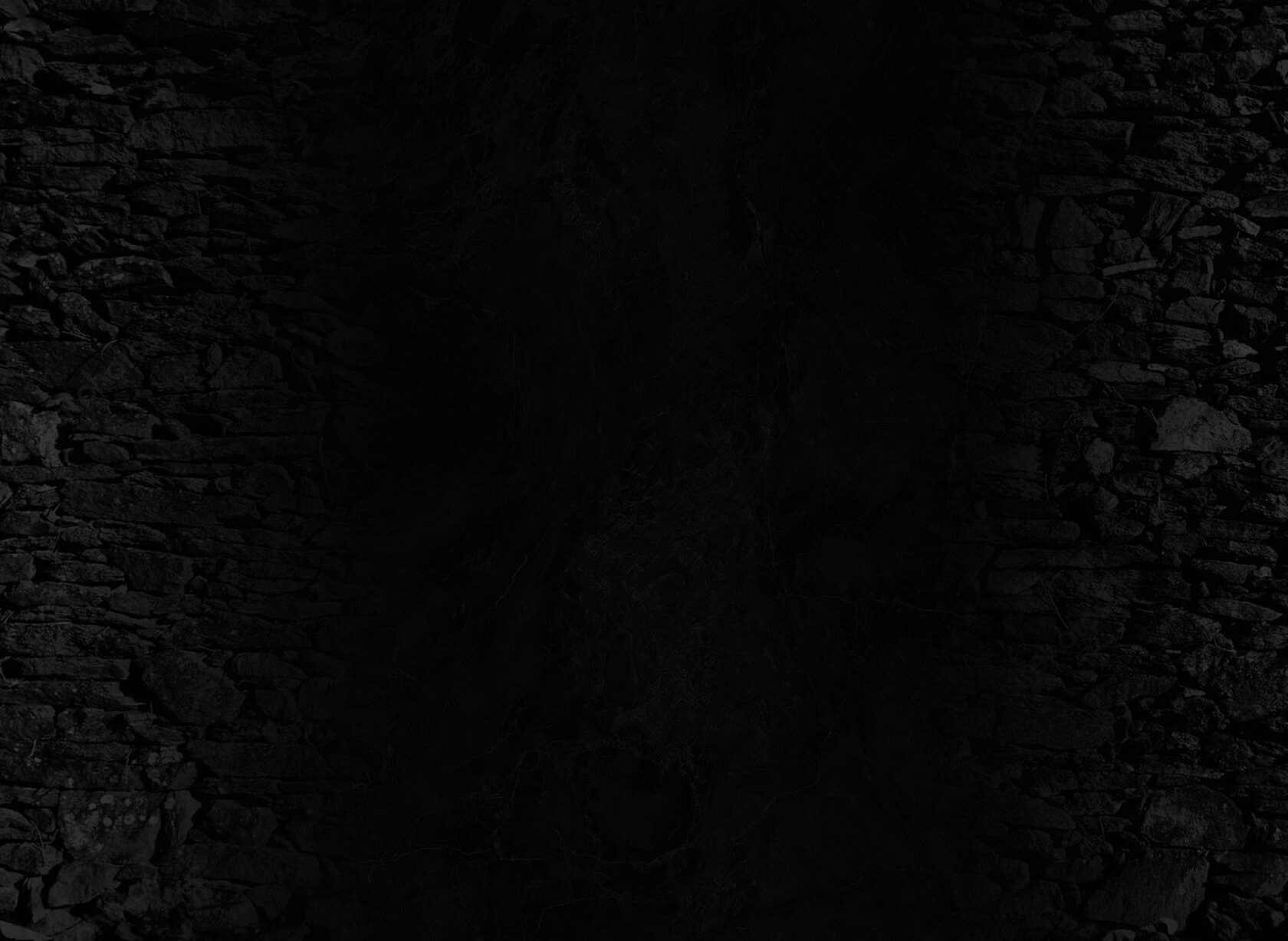Holocaust in Transnistria
Testimony of Witnesses, Memories of Survivors




Every 27th of January the world pays tribute to the Holocaust victims (International Holocaust Remembrance Day). On this day in 1945, the Red Army liberated the prisoners of the Nazi death camp Auschwitz, in which, according to various estimates, from 1.5 to 4 million people died, most of whom were Jews.
There were many such camps in the territories controlled by the Third Reich (1933-1945 Germany). There were even more Jewish ghettos. The Nazis created them for “ethnic cleansing”, as according to racial concepts, all peoples were divided into “superior” and “inferior”. The latter included not only Jews, but also Gypsies and Slavic peoples.
In modern scientific literature and journalism, this policy of Nazi Germany was called the “Holocaust”, it comes from Ancient Greek “holocaustosis”, meaning “a burnt sacrifice”, “destruction with fire”.
The Babi Yar tract in Ukraine is widely known. The place is associated with the Holocaust – this is where the Nazis carried out mass executions. Tens of thousands of people were killed there in two days.
Pridnestrovie has its own synonym for the Holocaust. This is the so-called Transnistria governorate – an administrative structure between the Bug and the Dniester, created by the Fascist occupiers. There were ghettos and death camps here as well.
The stories of miraculously surviving prisoners and witnesses of mass executions are so terrible that they seem impossible to believe. But it was all real.
In modern scientific literature and journalism, this policy of Nazi Germany was called the “Holocaust”, it comes from Ancient Greek “holocaustosis”, meaning “a burnt sacrifice”, “destruction with fire”.
The Babi Yar tract in Ukraine is widely known. The place is associated with the Holocaust – this is where the Nazis carried out mass executions. Tens of thousands of people were killed there in two days.
Pridnestrovie has its own synonym for the Holocaust. This is the so-called Transnistria governorate – an administrative structure between the Bug and the Dniester, created by the Fascist occupiers. There were ghettos and death camps here as well.
The stories of miraculously surviving prisoners and witnesses of mass executions are so terrible that they seem impossible to believe. But it was all real.

Transnistria governorate map, 1941-1944

DUBOSSARY BABI YAR

In September 1941, the tobacco factory in Dubossary was crowded. At first, they thought that the occupation authorities decided to drive people to work. But then it became clear that something terrible was being prepared.
Jews were brought here not only from all over Pridnestrovie, but from neighboring Bessarabia as well. On September 12, massacres began.
Ozias Ukstein, chairman of the Jewish community of Dubossary, said that almost half of the town’s population before the war were Jews. Few of them survived.
Jews were brought here not only from all over Pridnestrovie, but from neighboring Bessarabia as well. On September 12, massacres began.
Ozias Ukstein, chairman of the Jewish community of Dubossary, said that almost half of the town’s population before the war were Jews. Few of them survived.
“
“At 5 o’clock in the morning on September 12, 1941, having concentrated 2.5 thousand people on the territory of the tobacco factory, they started out with the so-called gold processing, i.e. taking rings, earrings, chains, all jewelry of gold from people. If someone had gold teeth, they were pulled out with ticks or knocked out with a hammer. Men were separated from women and children. First, they were taken out of the factory and brought to these prepared moats. Then they were forced to sit on the ground, 100 people were chosen from this group and 20 German soldiers, standing opposite, shot them point-blank. Those who didn’t fall into the moat were pushed down by local police officers with pitchforks piercing their stomachs,”
The events in Dubossary in September 1941 formed the basis of the book of Historical Sciences Candidate Igor Shornikov “Sonderkommando in Dubossary”. It was published in 2016 and provides details on the Holocaust in Pridnestrovie. Not only it speaks about the victims of the genocide, but also names the executioners.

Mass executions in Dubossary, September 1941
On 12-28 September 1941, 6000 to 8000 people were annihilated by sonderkommando in Dubossari.
Eyewitnesses claimed that it was not Germans who carried out the murders themselves, but Romanians, and in a festive atmosphere. A banquet table was located not far from the place of execution.
Eyewitnesses claimed that it was not Germans who carried out the murders themselves, but Romanians, and in a festive atmosphere. A banquet table was located not far from the place of execution.
Pyotr Ignatiev from Dubossary will never forget the September 1941 massacre. He was fourteen years old, when he experienced inhuman cruelty.
“
“Before the murder, people were searched for gold. The women’s braids were cut off. Little children had to be put onto the shoulders of the adults, and the older ones were forced to kneel in front of the pit. Then it happened over and over again. When the pit was filled with the executed, it was covered with straw and earth. Guards were posted nearby. The next day we could see the ground above the pit go up and down, as if breathing. There were still people alive in the graves.”

On the way to the ghetto, Transnistria governorate
Vladimir Dikusar from Dubossary remembers how the executions began. All the town’s Jews and activists were commanded to gather at the local House of Culture. Ten minutes later, they were taken out of the building in groups. A few more passed and Vladimir Dikusar heard gunshots. This was the beginning of the massacres. His father was one of those killed.
He remembers how a dog came to the mass grave after the shooting. The animal was grieving the loss of its owner. The dog dug a pit next to the corpse and slept there. Two weeks later, the dog was gone: he died in this pit – next to his owner.
The murders were not carried out only by order of the German leadership. People got killed simply on a whim.
He remembers how a dog came to the mass grave after the shooting. The animal was grieving the loss of its owner. The dog dug a pit next to the corpse and slept there. Two weeks later, the dog was gone: he died in this pit – next to his owner.
The murders were not carried out only by order of the German leadership. People got killed simply on a whim.
“
“There was an old Jew named Peisik. One evening he led the cows from the pasture. Romanian soldiers blocked his way and led him. The next morning his corpse was found on the riverbank”.

Mass executions in Dubossary
Vladimir Dikusar recalls a unique case when the Germans refused to shoot those sentenced to execution. They were seven female students. But they could not be saved. The next day, the town commandant personally carried out the execution.
Teenage Dmitry Kozhukharev saw how hungry and exhausted Jews were rushed to Dubossary.
“
“They had no shoes. Their bloody legs were wrapped in rags. People were starved. We threw them apples, pears, plums. Our parents gave us bread for the Jews. I heard the screams of those sentenced to death in the tobacco factory. The women let out inhuman howls, tore their hair and clothes. They asked to spare their lives… Men and women were executed separately, in groups of 20 – shot point-blank in the back of the head”.
Dmitry Kozhukharev’s own aunt who was mistaken for a Jew miraculously escaped the assembly line of death. She was held at a tobacco factory for two days, and then taken to be shot. Those condemned stood up for her, telling the guards she wasn’t Jewish. Owing to them, she survived.
Nikolai Hvorostyan, a boy whom the invaders took to be shot with his family also survived by a miracle. He spent several hours in a mass grave among his relatives’ corpses.
“
“One Russian family hid us in the basement. But someone gave us away. My mother, father, me (I was 14 at the time) and six older sisters were locked up in the tobacco factory. We were kept there and starved for a month: they knew that my mother and sisters were communists. In the afternoon we were driven to the pits, lined in three and shot. My parents died together. The Germans took my sisters Zlota and Peisa away the night before, raped them, and hanged them at dawn. Then they were thrown into one of the pits. I got placed between sisters Lyuba (with a baby in her arms) and Zhenya. And they fired...
I woke up late at night. My back ached. Apparently, the bullet only grazed me, but did not enter my body. That’s why I survived. There was nothing to breathe under the corpses, in the thick blood. I began to carefully get out. It was slippery because of the blood around the pit, there were fingers and pieces of flesh – from explosive bullets. I took one last look at my family. I thought I was about to go crazy. Besides me, six other survivors escaped that night. We ran off in different directions and never saw each other again.”
I woke up late at night. My back ached. Apparently, the bullet only grazed me, but did not enter my body. That’s why I survived. There was nothing to breathe under the corpses, in the thick blood. I began to carefully get out. It was slippery because of the blood around the pit, there were fingers and pieces of flesh – from explosive bullets. I took one last look at my family. I thought I was about to go crazy. Besides me, six other survivors escaped that night. We ran off in different directions and never saw each other again.”
Nikolai made it to the front line and then fought in the Red Army ranks until the Victory. Every September he used to come to the Dubossary Memorial to the Victims of Fascism.

A LONG HORROR NIGHT
THE RYBNITSA GHETTO


Rybnitsa, Voykova st. During the occupation, the Rybnitsa ghetto was located here
Raisa Reznik (Rimboym) from Rybnitsa was very young when the war began. She was three years old when, in the summer of 1941, she and her parents tried to flee from death. The Jewish family walked along the lengthy steppe roads to the east, but could not make it to the front line.
“
“My father tried to collect dew in the morning to give me something to drink, and the bombings were all around us. But one day the Romanians took us to their station and abused my parents. My father was told to take off his clothes and boots, and was beaten unconscious. They poured cold water over him and continued to beat him up, constantly pointing guns in his face, threatening to kill him. Then they told my mother to take me and go leaving my father, but she refused, she put my father down, sat on his lap, took me in front of her and told them to shoot us all. It lasted all day, I cried so hard that they decided to show mercy and give me some food, but I refused to take it from their hands, then one Romanian took me by the throat and said: “She has got a Stalinist spirit.” And threw me to the ground. Then, a Magyar in a German uniform arrived. I don’t know whether he was high-ranking, but he stood up for us and said that if the Romanians didn’t let us go, he would complain to the German commandant’s office. The threat took effect, and that evening they let us go. People who lived nearby said that no one had ever left that place alive before.”
The Reznik family returned to Rybnitsa and lived in the ghetto behind barbed wire. They were the lucky ones – they survived to the release.
Grigory Tsvi-Pagis describes the Rybnitsa ghetto:
Grigory Tsvi-Pagis describes the Rybnitsa ghetto:
“
“It was hell. Local Jews and refugees were brought to one block. 25 people had to live together in a room. Everyone had a yellow star on their chest. The morning routine: an order was made over the megaphone to all adults and children without exception – healthy or sick – to go outside immediately. Children and old people who could not quickly jump off the bed and run got beaten up. Having lined us up, they commanded: every second one comes forward, the rest leave. Those who came forward were taken away. Everyone knew what awaited them: the weak ones would be shot, and the rest would be driven to work in stone quarries – places where Jews could be destroyed without executions. The work there was absolutely unbearable. Even the strongest ones could not survive more than three months. If someone fell of exhaustion, the warden finished him off.
The three years the boys spent in the ghetto can be compared to a continuous horror night. Along with the adults, we were forced to work on laying roads, digging trenches, building fortifications. And so it was every day for three years until March 1944, when the Red Army liberated us.
In 1943, when the Germans no longer felt so heroic, the partisan movement began to expand. There were also Jewish boys who escaped from the ghetto in the partisan detachments. Sometimes they would sneak into the ghetto and ask the younger boys to come to the places where German or Romanian units were stationed. They gave us groceries and asked us to exchange them for warm clothes. By that time, the Germans were starving and were happy to take some food in exchange for scarves and mittens. The boys took the clothes asking us what kinds of weapons we saw, how many tanks, how many officers and soldiers we could count. At first, I didn’t quite understand why they asked about it. Only later did I realize that this valuable information was passed on to the partisans. So, until March of 1944 we helped the partisans. The Germans were sure that those were the village kids coming to them. It’s not hard to imagine what would happen if they found out that they were being fed by boys from the Jewish ghetto.”
The three years the boys spent in the ghetto can be compared to a continuous horror night. Along with the adults, we were forced to work on laying roads, digging trenches, building fortifications. And so it was every day for three years until March 1944, when the Red Army liberated us.
In 1943, when the Germans no longer felt so heroic, the partisan movement began to expand. There were also Jewish boys who escaped from the ghetto in the partisan detachments. Sometimes they would sneak into the ghetto and ask the younger boys to come to the places where German or Romanian units were stationed. They gave us groceries and asked us to exchange them for warm clothes. By that time, the Germans were starving and were happy to take some food in exchange for scarves and mittens. The boys took the clothes asking us what kinds of weapons we saw, how many tanks, how many officers and soldiers we could count. At first, I didn’t quite understand why they asked about it. Only later did I realize that this valuable information was passed on to the partisans. So, until March of 1944 we helped the partisans. The Germans were sure that those were the village kids coming to them. It’s not hard to imagine what would happen if they found out that they were being fed by boys from the Jewish ghetto.”
Arkady Kuperstok recalled the horrors of the Rybnitsa ghetto:
“
“From time to time the Germans shot the ghetto prisoners: once a month, putting children, old people, women face to the wall completely naked, hands entwined behind. The Germans loved counting very much. High ranking Germans arrived when the whole ghetto was lined up, they immediately beat us with machine guns from behind and at the command of a senior officer, if he decided to shoot every fifth person that day, every fifth person was taken and shot in front of us. The next time we were put up for execution, the senior officer wanted to shoot every seventh person – so, the unfortunate ones were shot under this calculation. The Nazis’ abuse knew no limit. We already knew the German execution technology, so the ghetto prisoners stood randomly apart from their relatives and prayed to God that the ill-fated number would not fall on people close to us, although the soul ached for every Jew under the death number. These memories leave pain in the soul.
One day a command came from the German leadership to dig a pit for a large object. The prisoners dug for a long time – all by hand. When the pit was ready, the Germans herded all the ghettos, dumped 40 families into this pit and buried them using bulldozers. It is impossible to repeat the screams of people buried alive, as well as those on whom God had mercy this time. The earth was breathing for several days.”
One day a command came from the German leadership to dig a pit for a large object. The prisoners dug for a long time – all by hand. When the pit was ready, the Germans herded all the ghettos, dumped 40 families into this pit and buried them using bulldozers. It is impossible to repeat the screams of people buried alive, as well as those on whom God had mercy this time. The earth was breathing for several days.”

In Tiraspol, the invaders turned the territory of the city hospital into a ghetto. Thousands of Jews were executed in the Kolkotovaya Balka quarry.

The Tiraspol ghetto map
In Bendery, massacres were carried out in the moat of the Bendery Fortress.
If 12 thousand Jews lived in the Bendery before the war, by 1943 there were only two people left.
If 12 thousand Jews lived in the Bendery before the war, by 1943 there were only two people left.

People in the Bendery ghetto
A case of mass execution on the Dniester is also known in Kamenka. In February 1942, the invaders made an ice hole in the frozen river and drowned people in it. Eyewitnesses recall that one woman pushed into the ice hole grabbed the Romanian by the neck and dragged him under the water.

MEMORIAL SITES

According to historians’ various estimates, 40 to 90 thousand Jews were killed in Pridnestrovie during the occupation: men, women, old people, children.
The memory of the crimes is perpetuated in Memorials, monuments to the victims of the genocide and memorial plaques. In Pridnestrovie, they are installed on the sites of ghettos and mass executions.
The memory of the crimes is perpetuated in Memorials, monuments to the victims of the genocide and memorial plaques. In Pridnestrovie, they are installed on the sites of ghettos and mass executions.
One of the monuments, the Memorial, is located in Dubossary on the site of mass graves. The initiative group led by Asya Moskaleva identified the names of more than 3 thousand executed. These names are engraved on memorial plaques.
The Sarcophagus – a long tombstone – is installed at the Jewish cemetery in Rybnitsa. 500 executed ghetto prisoners lie here.
The monument to the victims of the Holocaust was erected in Bender. There are more than 200 surnames on memorial plaques. PMR President Vadim Krasnoselsky and Russian People’s Artist Alexander Rosenbaum laid flowers at the monument to the Holocaust victims in Bendery.

Monument to the Holocaust victims on the Jewish cemetery in Bendery
“
“The last century was marked by terrible atrocities, catastrophes, among which, of course, the Holocaust stands out – the extermination of people of Jewish nationality. We know the figures: 6 million people died in Europe from 1933 to 1945. This terrible tragedy did not spare the territory of modern Pridnestrovie, the so-called occupation territory, which was then called “Transnistria”. According to various sources, from 800 thousand to a million persons of Jewish nationality were destroyed, killed, torn to pieces. It’s difficult to imagine a more terrible tragedy. It all ended with the victory of the Soviet Union and the Allies in the Great Patriotic War and World War II. It would seem that Nazism has been put to an end, fascism has been left in the past – finally and irrevocably. As a young resident of the Soviet Union, I did not even doubt this. But then, in the late 1980s and early 1990s, fascism sprouted through the body of the Soviet Union, Nazism raised its head. Even here, on the territory of modern Moldova, the Moldavian SSR, anti-Semitic and Russophobic slogans were heard. Why? Why is this happening? The answer is simple: there is not enough memory, and some people don’t have enough conscience to resist these phenomena – fascism and Nazism.”
A memorial plaque has been installed at the site of execution in the moat of the Bendery Fortress.

A memorial sign to those executed in the moat of the Bendery Fortress

"TRANSNISTRIA" IS
A SYNONYM FOR THE HOLOCAUST

No one knows the exact number of victims of the Holocaust. The figure that historians base on is about 6 million people. That’s how many Jews were annihilated by the Nazis. At that time – a third of the entire Jewish population in the world.
In Pridnestrovie, the occupation term “Transnistria” is associated with the Holocaust. The President of the Pridnestrovian Moldavian Republic Vadim Krasnoselsky has repeatedly noted that it is incorrect to call the country by this word. There is confusion today: in the West people often say “Transnistria” meaning Pridnestrovie, whereas this is an occupation concept used by the Moldovan authorities.
In Pridnestrovie, the occupation term “Transnistria” is associated with the Holocaust. The President of the Pridnestrovian Moldavian Republic Vadim Krasnoselsky has repeatedly noted that it is incorrect to call the country by this word. There is confusion today: in the West people often say “Transnistria” meaning Pridnestrovie, whereas this is an occupation concept used by the Moldovan authorities.
“
“The term “Transnistria” in relation to Pridnestrovie was invented by the Moldovan side. But initially it appeared during the Second World War, defining the territory of the left bank of the Dniester occupied by the Romanians. It included Pridnestrovie. We had our tragedies, as the entire Soviet Union did. One of them is the execution of about 20 thousand Jews in Dubossary. For me personally, as I respect my history and my people, the term “Transnistria” is a synonym to the word “Holocaust”. This is the same occupation concept that is charged with fascism and Nazism. Using it as the name of our state is unacceptable and insulting.”
Share:
©1992-2020 Novosti Pridnestrovya, the official news agency of the Pridnestrovian Moldavian Republic.
When using material from the web site, the active hyperlink to the source is required.
Some material may be inappropriate for those under 16.
When using material from the web site, the active hyperlink to the source is required.
Some material may be inappropriate for those under 16.


